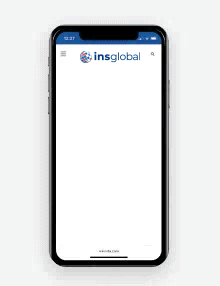In today’s work landscape, where employee well-being is a key focus, understanding and using effective paid annual leave policies is crucial for employers. Two common approaches to time-off policies are providing Floating Holiday and Paid Time Off (PTO).
In this guide, we’ll explore these options, compare them, and help employers make informed decisions that can boost workforce effectiveness.
Paid Time Off (PTO) Explained
Paid Time Off (PTO) is a complete approach to leave management that combines vacation, sick leave, and personal days into a single bank. This system grants employees more choice over their paid leave, bringing a sense of ownership and flexibility.
The more traditional way to see paid leave, PTO minimums are typically required by law. Banks of leave usually accumulate over time, letting employees build up a reserve for extended breaks or emergencies. This leave will include many types of leave, including paid sick leave, parental leave, official public holidays, paid holidays, and others.
PTO will often increase with seniority, and extra leave may form contract perks or benefits for highly valued employees.
This model is most attractive to workers who value a holistic approach to time off but want a simple and transparent approach to leave. It acknowledges the various reasons for needing leave without needing detailed requests.

Tired of scrolling? Download a PDF version for easier offline reading and sharing with coworkers
How Does PTO Vary Across Different Countries?
The global workforce is diverse, and so are the approaches to paid time off. In some countries, the law dictates minimum leave amounts, while in others, it is left to the needs or choice of employers.
A good example of this variety would be European countries that mandate a minimum number of annual vacation days. At the same time, in the United States, the law relies on employers to establish their own leave policies leaving almost a third of workers without any kind of PTO.
Floating Holiday Explained
Floating holiday, sometimes referred to as “flex holiday”, is a versatile component of a leave policy. Unlike traditional holidays with fixed dates, floating holiday allows employees more freedom to choose when they take time off beyond legal minimums. This flexibility recognizes the diverse needs and preferences of a modern workforce.
Typically, floating holidays can encompass various occasions, including personal milestones, cultural celebrations, or religious observances that may not align with standard public holidays.
As a result, floating holiday is often taken a day at a time, as opposed to PTO, which would be taken in larger blocks.
How floating holiday is offered may differ from country to country and company to company. Many companies offer a form of floating holiday already by giving their employees more choice in when and how they take leave.
In some places, annual leave is only available in specific windows as chosen by the employer due to company needs or seasonal dips in activity. By offering floating holidays, employers empower their employees to tailor their leave to their unique circumstances, promoting a healthier work-life balance.
As floating holiday is generally seen as being outside of mandatory annual leave minimums, it can be used as an employee perk, boosting satisfaction and retention rates.
Comparing Floating Holidays and PTO
When deciding between floating holidays and PTO, employers should consider the unique needs and preferences of their workforce. While floating holidays offer flexibility and personalization, PTO provides a more structured and comprehensive approach.
Some employees may prefer the freedom to choose when to take time off, while others may appreciate the straightforward approach of a centralized PTO bank.
Additionally, the nature of the industry and the company’s culture can influence the choice between these two models. Creative and tech-driven industries might find value in the autonomy provided by floating holidays, whereas organizations with a more traditional structure may opt for the clarity of a PTO system.
At the same time, employers may choose to offer both types of leave for the range of benefits this can bring to employees.
Understanding the variety of options available and ensuring fair and beneficial treatment for employees is crucial for multinational companies striving to create consistent and fair leave policies across their global teams.
Robust HR systems and outsourcing companies can play a big role in navigating these complexities, ensuring compliance with local regulations while maintaining a cohesive global approach to leave management.
Legal and Policy Considerations for Employers
Navigating legal requirements is paramount when developing a leave management policy. This is particularly true when managing a global workforce. Understanding the employment laws and regulations in each jurisdiction where your company operates is crucial to avoid compliance issues and legal complications.
Employers should be aware of the minimum leave requirements mandated by local authorities to ensure their policies align with these standards.
Here, HR outsourcing providers or local third-party legal experts can prove invaluable, offering expertise in global employment regulations and helping organizations create policies that comply with local laws while fostering a positive work environment.
Weighing the Pros and Cons of PTO vs. Adding Floating Holidays
Both PTO and floating holidays have their advantages and potential drawbacks. PTO provides a sense of security for employees who may need extended leave while floating holidays offer unparalleled flexibility.
When making this decision, employers should consider their company culture, industry norms, and employee preferences.
Some key factors to consider include:
Floating Holiday | PTO | |
Pros | · Customizable to individual preferences · A culture of trust and autonomy · Accommodates diverse cultural and religious observances
| · Predictable and structured · Easier to manage and track · Appeals to employees who prefer stability
|
| Cons | · Requires more intricate tracking and management · May lead to scheduling challenges if not properly communicated
| · May not cater to diverse cultural or personal needs · Employees may feel limited by a rigid system
|
FAQs
What is an Appropriate Duration for an Effective Time-off Policy?
The appropriate duration for a time-off policy depends on various factors, including industry standards, company culture, and legal requirements.
The first thing to consider should be legal minimums as national employment law requires. Beyond this, you can see leave benefits as a way to encourage and engage workers by going beyond minimum requirements while not offering so much leave that it causes scheduling problems.
HR outsourcing companies can assist in tailoring policies that align with your company’s unique needs, ensuring a balance between employee well-being and operating efficiency.
How Do You Smoothly Integrate Floating Holidays into Your PTO Policy?
Integrating floating holidays into a PTO policy requires clear communication and comprehensive guidelines. Employers can establish a basic framework that allows employees to choose a certain number of floating holidays within the overall PTO structure.
However, regular communication, training sessions, and easily accessible resources are key to clear leave policy.
Let INS Global Help You Understand and Organize Leave Management Processes Worldwide
For global employers, crafting effective leave management policies requires a nuanced understanding of both local regulations and the unique dynamics of your workforce.
INS Global is ready to assist your organization in navigating these complexities, providing expert guidance to streamline and organize leave management processes worldwide.
With nearly 20 years of experience providing consultation and support to companies through a variety of services, including global Employer of Record (EOR) services, payroll management, benefits management, and compliant recruitment, INS Global is the go-to source for effective workforce development.
Through our HR outsourcing services, you can ensure compliance, foster employee well-being, and create a harmonized approach to leave policies across borders.
Contact our team of dedicated experts today to take the next step in optimizing your global workforce.

SHARE